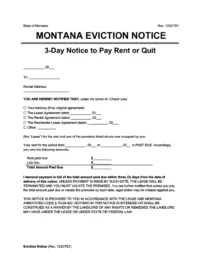
A Montana eviction notice is used by landlords to initiate the tenant eviction process, adhering to state law guidelines. This notice provides the tenant with the necessary time frame to respond or vacate the premises, as mandated by Montana regulations.

Evict a tenant if they haven't paid rent on time.
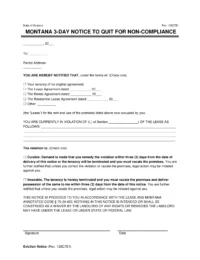
Use this notice to begin evicting a tenant if they've broken the terms of your lease relating to unauthorized persons or pets.
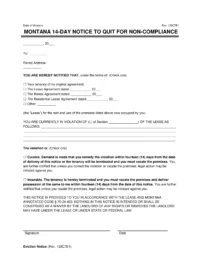
Begin evicting a tenant if they've broken the terms of your lease (except for periods relating to unauthorized persons or pets).
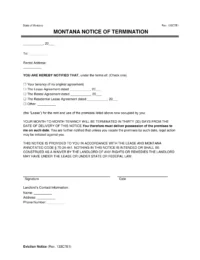
Use this notice to let a tenant know that you're ending a month to month lease.
In Montana, eviction lawsuits are governed by Title 70, Chapter 24, Part 4 of the Montana Code Annotated.
Beginning the eviction process in Montana requires a landlord to serve the tenant with the appropriate Montana eviction notice. This notice is intended to provide the tenant with the information they need to cure the default—as well as a notice that any failure to cure the default may result in an eviction.
Suppose the tenant refuses to move out of the property, pay past-due rent, or take any other (legal) action listed in the eviction notice. In that case, a landlord can file an eviction lawsuit with the district court in the county where the rental property is located.
At the court hearing, you’ll need to present evidence to show three factors: (1) there was a valid lease; (2) the tenant breached this lease; and (3) this breach resulted in damages, and the landlord is entitled to immediate possession. Evidence can include a copy of the lease agreement, payment records, photographs, or even witness testimony.
After you file an eviction lawsuit, the trial court will schedule the case for a hearing and notify the tenant that they must attend. At this hearing, the court will take evidence and hear testimony to determine whether the tenant violated the lease and what the remedy should be.
If the court finds that the landlord has proven their entitlement to the property and/or money damages, it will enter a judgment for possession. A tenant’s failure to promptly vacate the property after this judgment has been entered can result in additional monetary sanctions, especially if the landlord must file additional pleadings with the court to seek enforcement of its order.
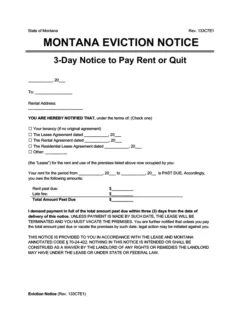
Create Your Montana Eviction Notice in Minutes!